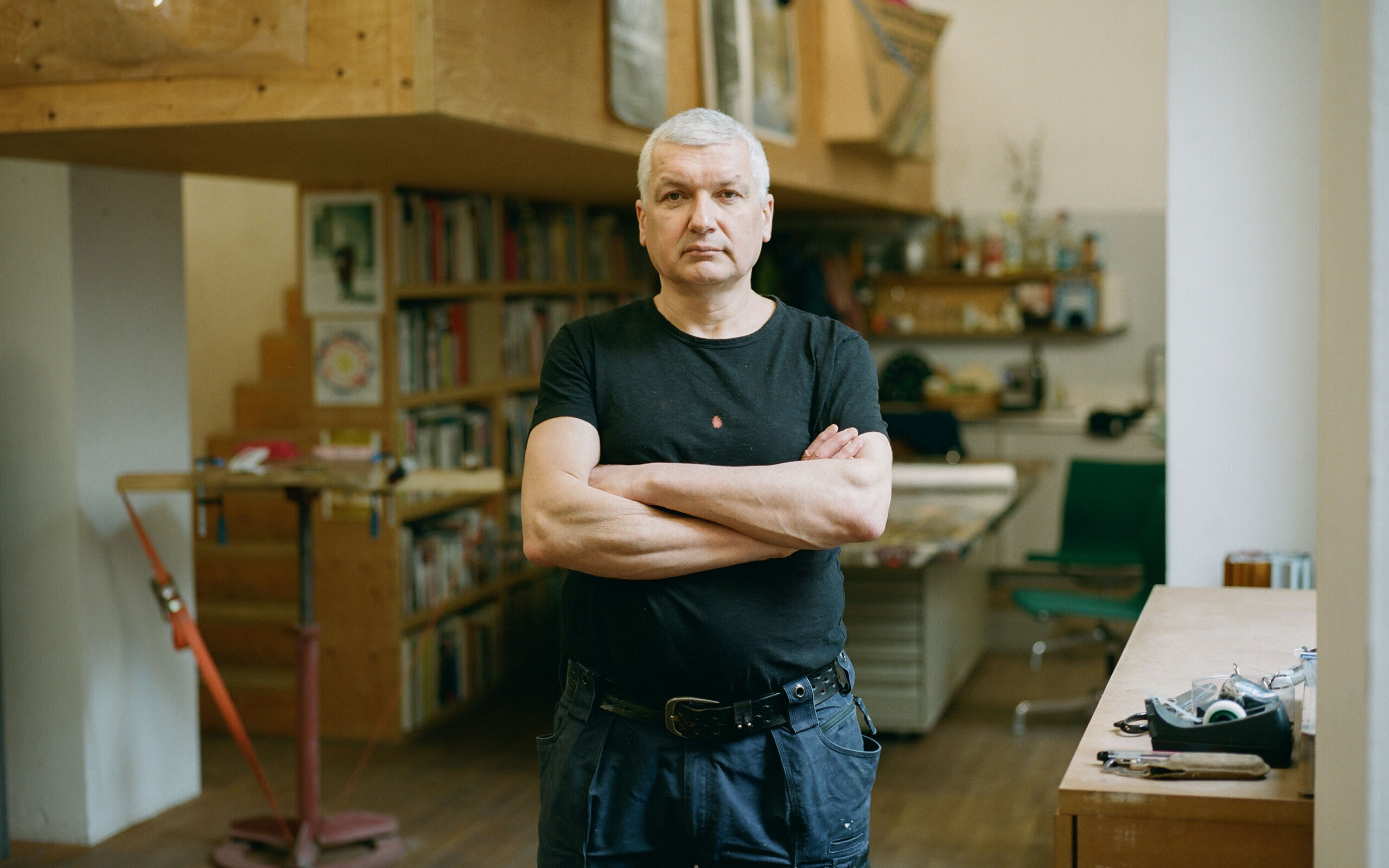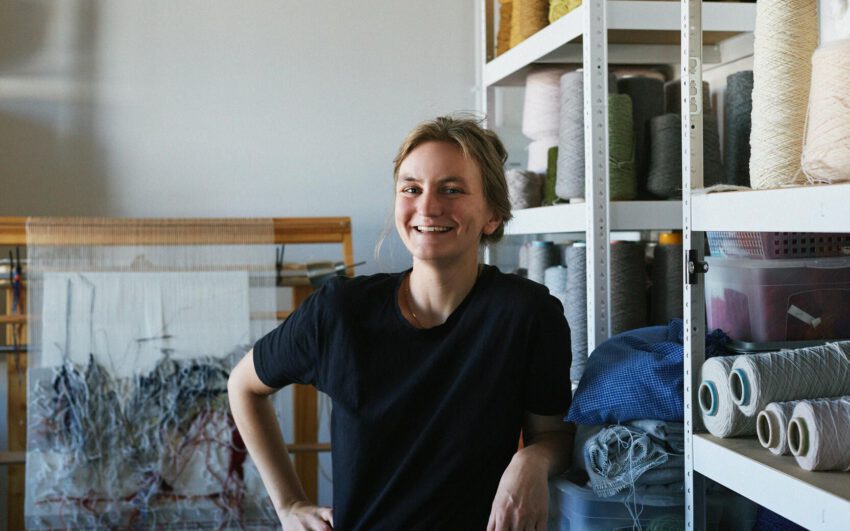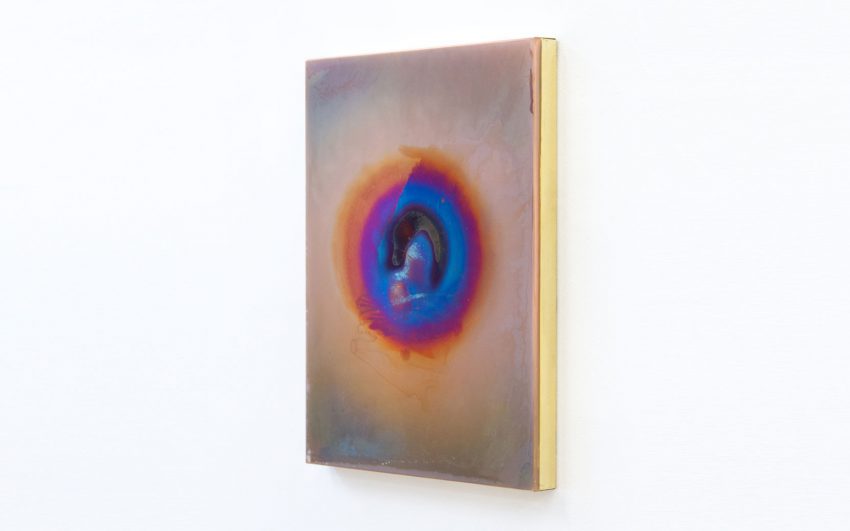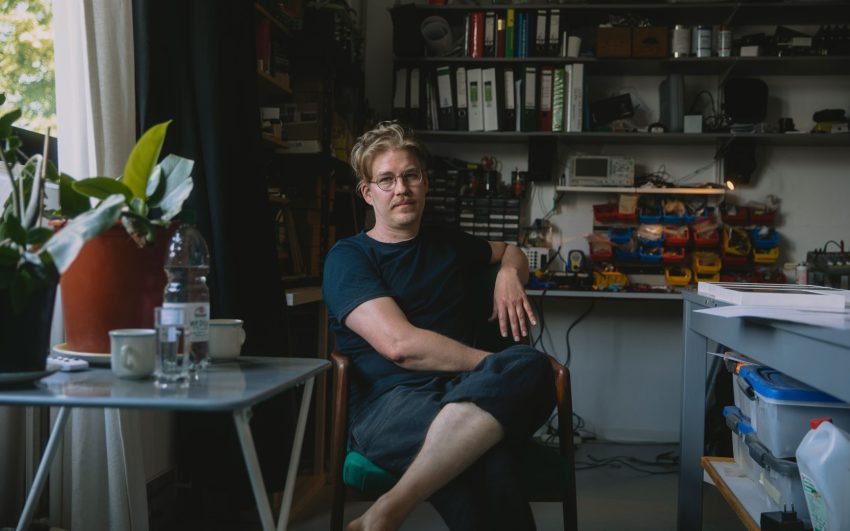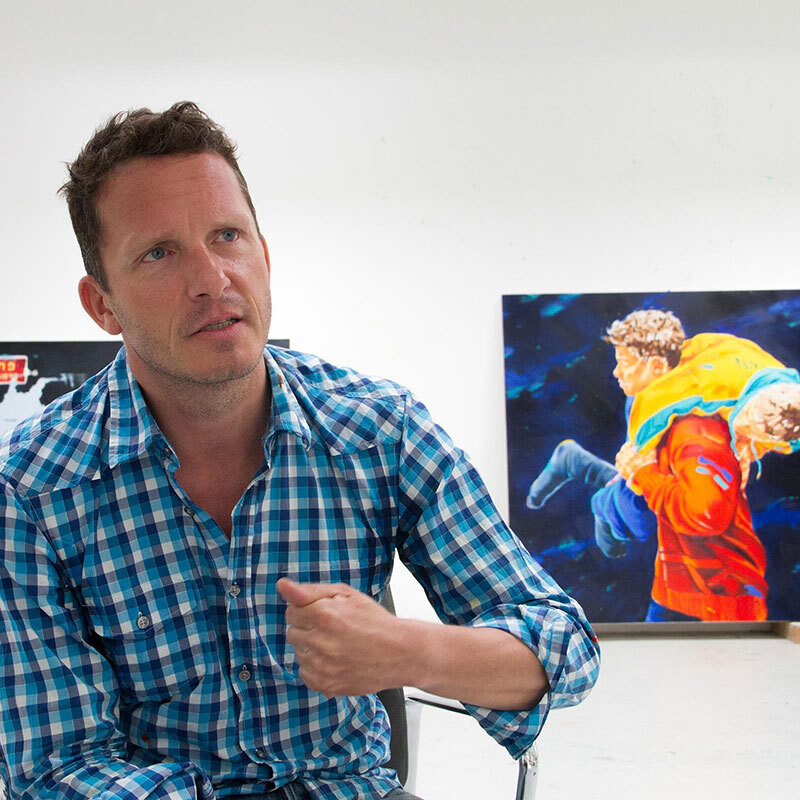The Tyrolean-born artist Peter Sandbichler frequently uses cardboard as his source material, which he cuts, folds, and thereby into three-dimensional objects. His preference for modular systems is just as apparent in the large-scale sculptures that interpose themselves within a space as in his smaller-scale origami-like works. Sandbichler’s particular interest in the fold in sculpture is equally evident when he reaches for other materials such as concrete or metal. We talked to the artist, who is adamantly committed to recycling, about his idea of the studio as an agent of transformation and his unconventional ways of sourcing materials.
Peter, before you studied sculpture at the University of Applied Arts and the Academy of Fine Arts in Vienna, you attended a vocational school for wood and stone sculpture. Did you have an artistic predisposition from your family?
Not at all. However, we had a sawmill at home, and I always liked working with wood – something you do when you grow up in a place like that. But I wasn’t overtly artistic, I just liked to try things out – perhaps on a greater scale than other children, because in the sawmill all kinds of materials were within reach. It was more than a sawmill, too: my father created a great product for which he recycled wood chips and other extraneous by-products from his sawmill to be used to make VELOX building board [also known as chipboard and particle board under different brand names in the UK and US.] The edge trimmings of the boards, which would otherwise have simply been incinerated, were compressed and mixed with cement to make rigid sheets or boards for house construction among other purposes. This was occurring when the concept of recycling of such material hadn’t even become a consideration, in other words it was formerly simply thrown out as waste.
Your father created a high-level recycled product and the core concern in your artistic work is recycling…
Yes, one could actually speak about predisposition here. I don’t come from an artistic family, but my father is a very creative person who has invented many things and registered patents for them. He developed machines and optimized processes. There was a laboratory on our company premises, where sound and material measurements were carried out, and experiments were conducted with synthetic and insulation materials. It was exciting to grow up in an environment where there was a high degree of trial and error. We children enjoyed it when something went wrong while experimenting with PU foam and it swelled up into a giant sculpture.
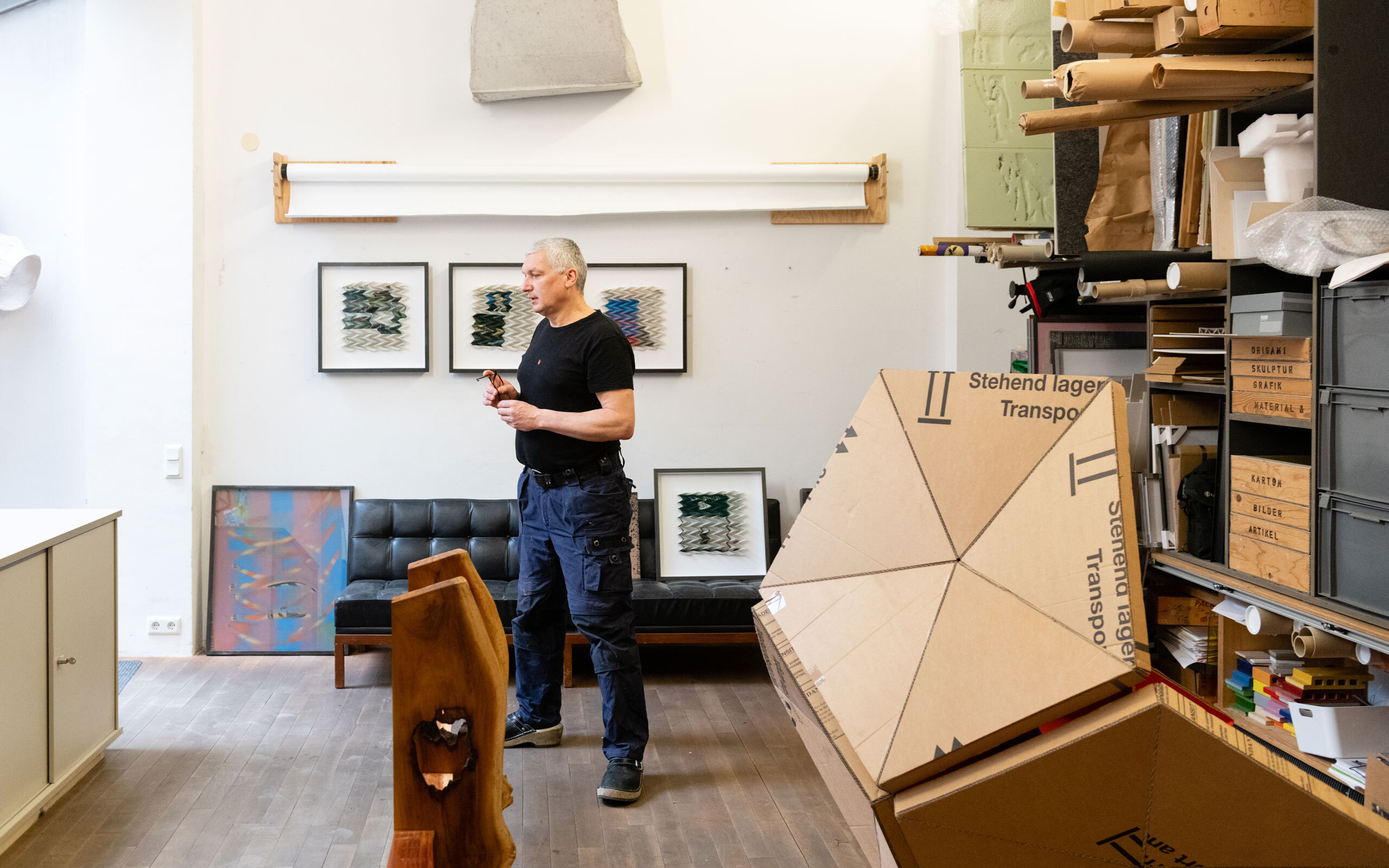
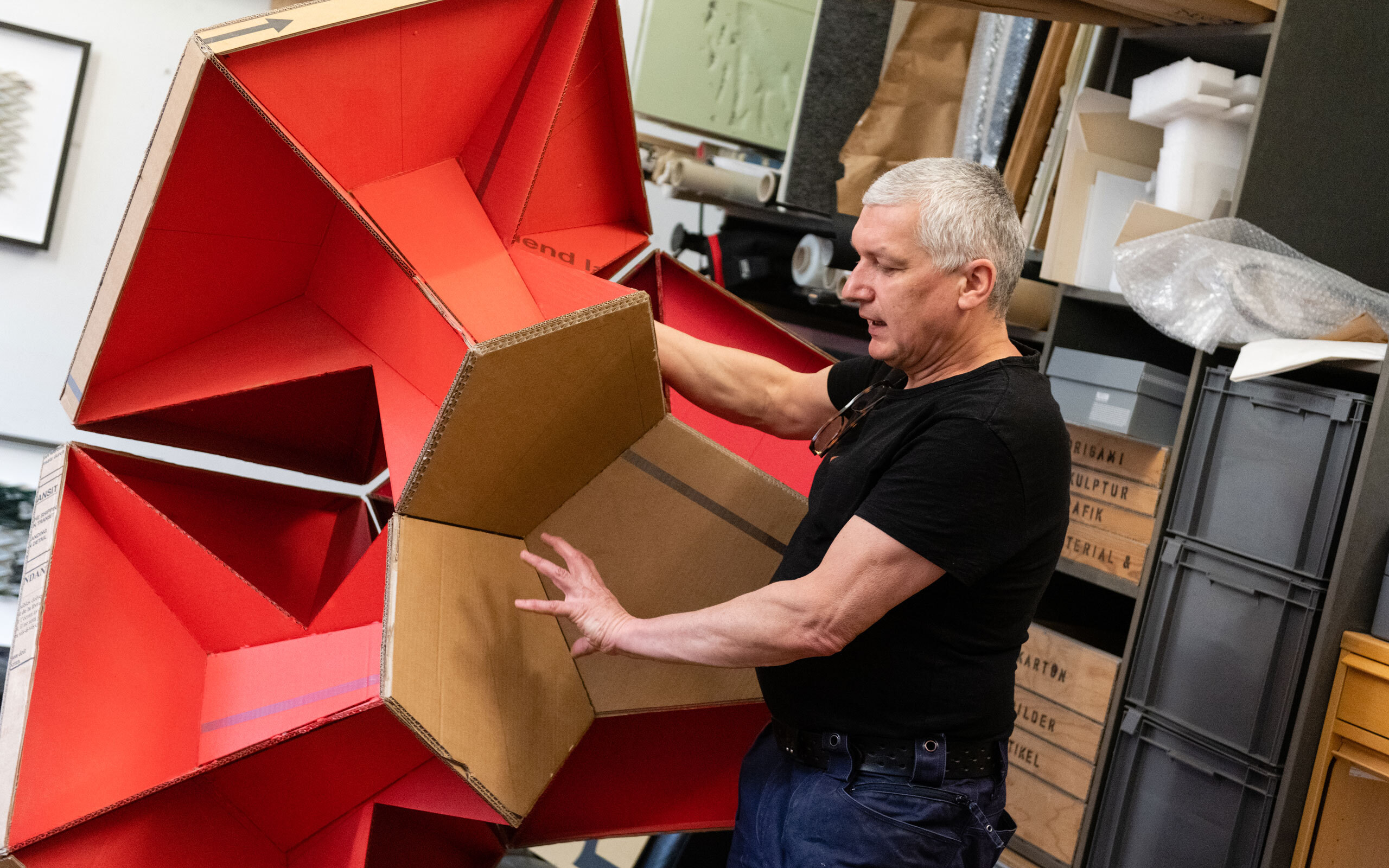
At what point in your biography did you come to art?
At the vocational school in Innsbruck, we not only learned the craft, but also enjoyed a great art education. We modeled, learned techniques for metal and concrete casting. In addition, we had classes in theory, art history, and life drawing. It was like the preliminary stage to the academy – on a high level. Then I studied at the Art Students League in New York and a year later, I returned to Vienna. Our teachers belonged to the post-war generation. They made the knowledge that had been buried during the Nazi era accessible to us 14-year-olds.
Was there an artist who particularly influenced you in your early youth?
Certainly Wilhelm Lehmbruck, but we also heard about Beuys at the time and learned a lot about Matisse and Picasso. It was the teachers themselves, the Tyrolean post-war generation in Innsbruck and in Vienna, Oswald Oberhuber for example, who as rector made the then University of Applied Arts a really vibrant place.
The list of your solo exhibitions and exhibition participations includes about 200 presentations. Which of these was particularly important to you?
Participation in the Venice Biennale 1995 was an important point in my biography. After studying sculpture at the Academy with Bruno Gironcoli, I joined Peter Weibel at the Institute for New Media in Frankfurt am Main, where I became intensively involved with computer art. Joint projects with Constanze Ruhm were set up at the interface of real and virtual space. Our contribution to the media pavilion was an interactive installation. With the help of a remote control, one could switch between six video projections that created a virtual knot around the building designed by Coop Himmelb(l)au and connected the art pavilion in the Giardini with the real sphere of the city. Curated by Peter Weibel, the Media Pavilion presented the range of media art of the time. Apart from the hardware, our work had no physical component. For me, this radical excursion was the point at which I decided to return to sculpture, object and installation art. What I took away from that time, however, was a preoccupation with media theory and a conceptual approach to craft. My working method oscillates in a loop between computer and reality. The models for my objects are always created three-dimensionally on the computer and tested using prototypes.
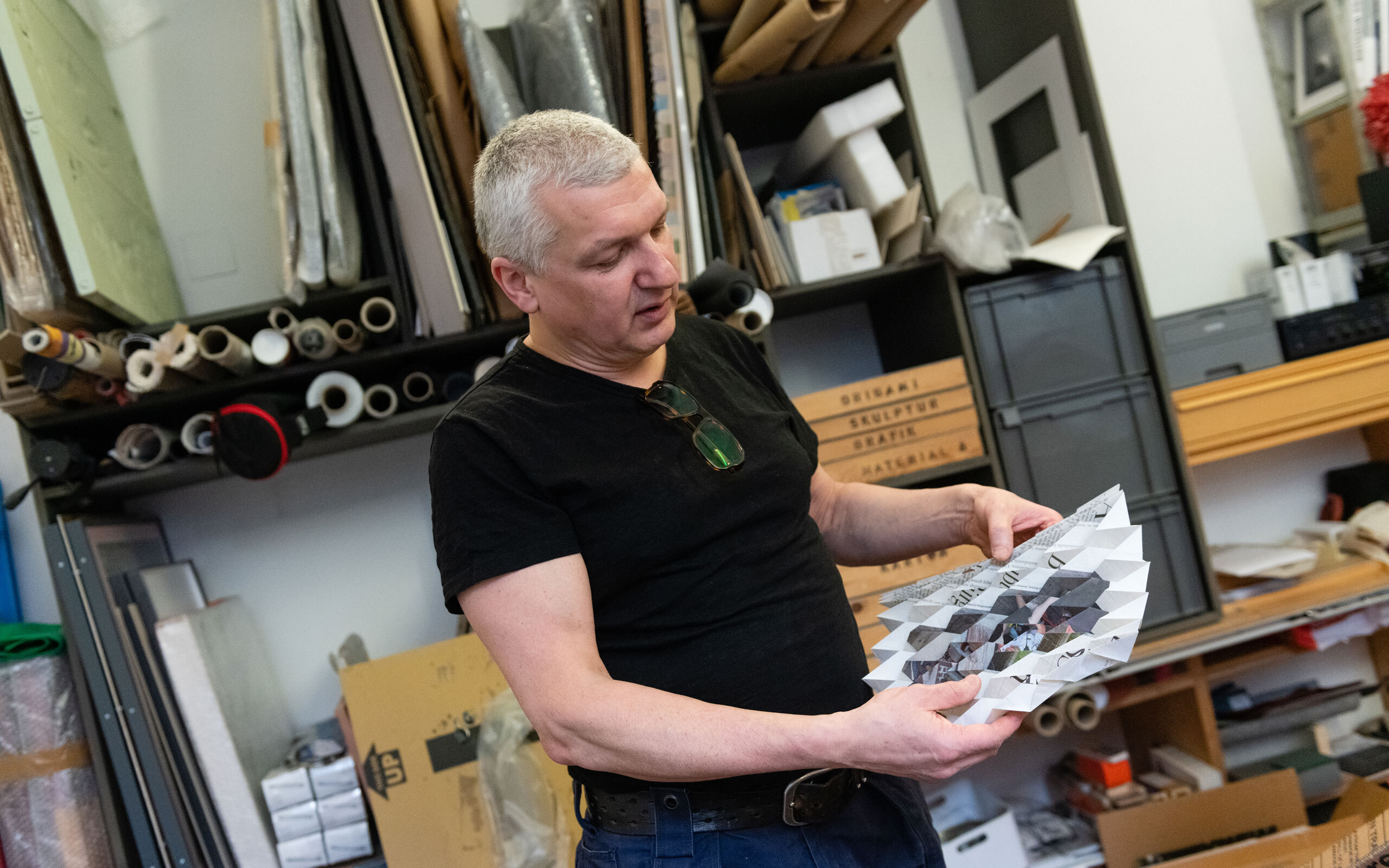
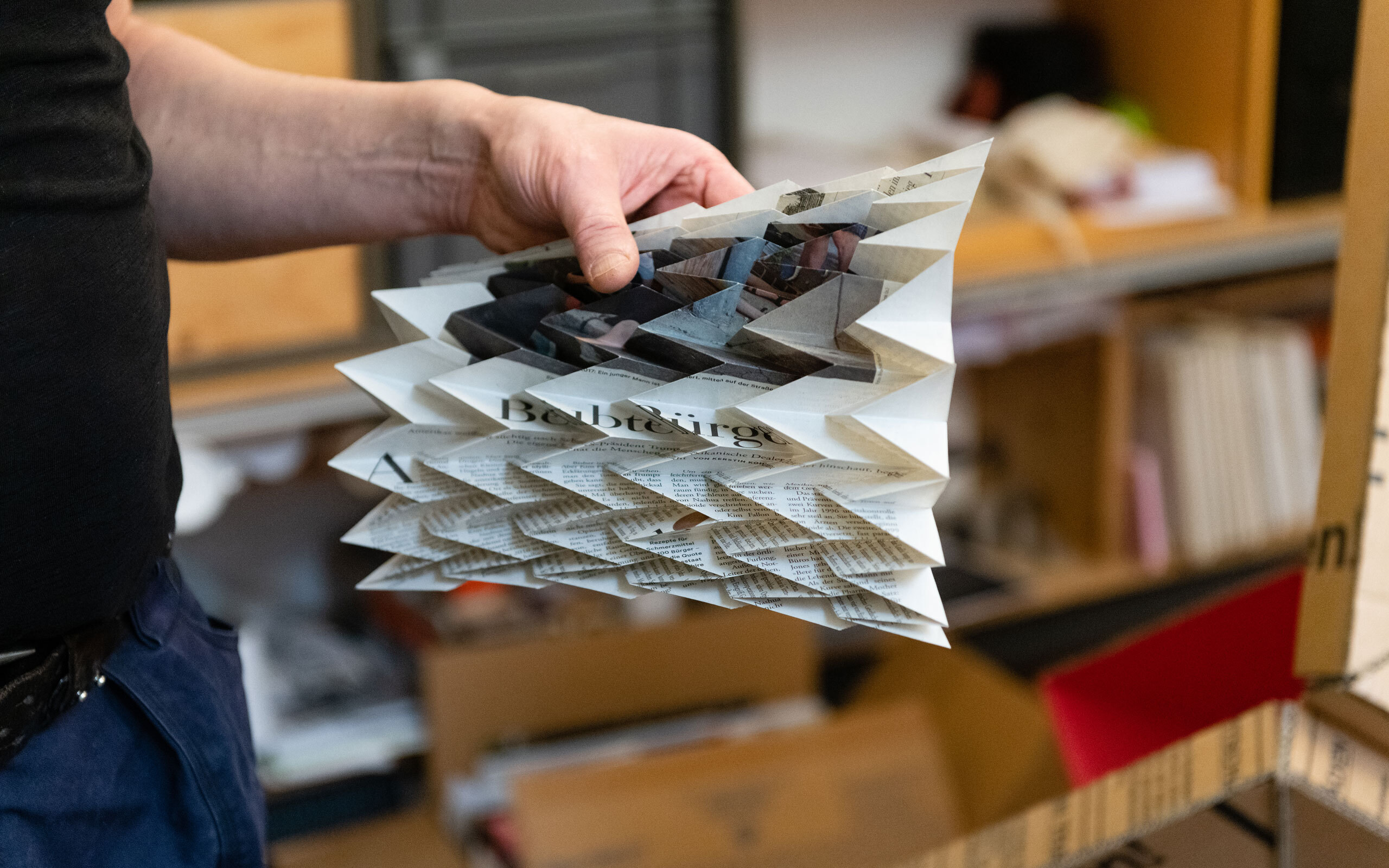
How can we imagine the work process in detail? Can you tell us more about it?
I start with sketches and quickly switch to the computer. The geometric structures, as they are currently being created for Kunstraum Dornbirn, are very complex works. Take the Skulls series, for example. In order to realize a very large Skull, I have to build it in individual parts. For this I developed the modular approach: A Skull is built from three times nine modules. Another project is the Twist, which I built first in steel and then in cardboard. The entire ring is composed of one and the same module. If I change one element, the whole arrangement changes.
I work with SketchUp software in a totally intuitive and creative way. After I take a modular approach, working with parameters is important. I have possibilities that I can’t exploit at all with drawing. Working in a modular way is definitely a basic interest of my work. I’ve always wanted to develop things where something bigger is created from many small parts that are all the same.
After your stay in Tokyo, you began to study the art of folding origami. What interests you about origami?
In origami, one and the same surface is rotated in space and results in the repetition of a folded three-dimensional object. In itself, my work The Time is a simple newspaper page, which as a source material is designed two-dimensionally for reading. By folding it, a transformation into the third dimension takes place. The work is based on a conceptual approach. I transform a found object, in this case the page of a newspaper, which interests me because of an illuminating article or a remarkable graphic. I send the selected newspaper page to an origami folding artist. When the envelope comes back and I unfold the work, it is insanely exciting to me. I see the image fanned out into many folds and something new is added; namely light and shadow. The fold is a theme that has preoccupied me since I was a student, in my study of architecture, philosophy and art all the way back to the Baroque period. The warp in the surface produces light and shadow. When I look at this concrete fold work, the caption "Stunned Citizens" reminds me of how painkillers are so unreservedly prescribed in America. Behind this, again, is the Sackler pharmaceutical dynasty that started the opioid epidemic in the U.S. with the painkiller Oxycontin. The same family that sponsors contemporary art on a grand scale and after whom many a museum building wing is named. That’s what interested me about the article.
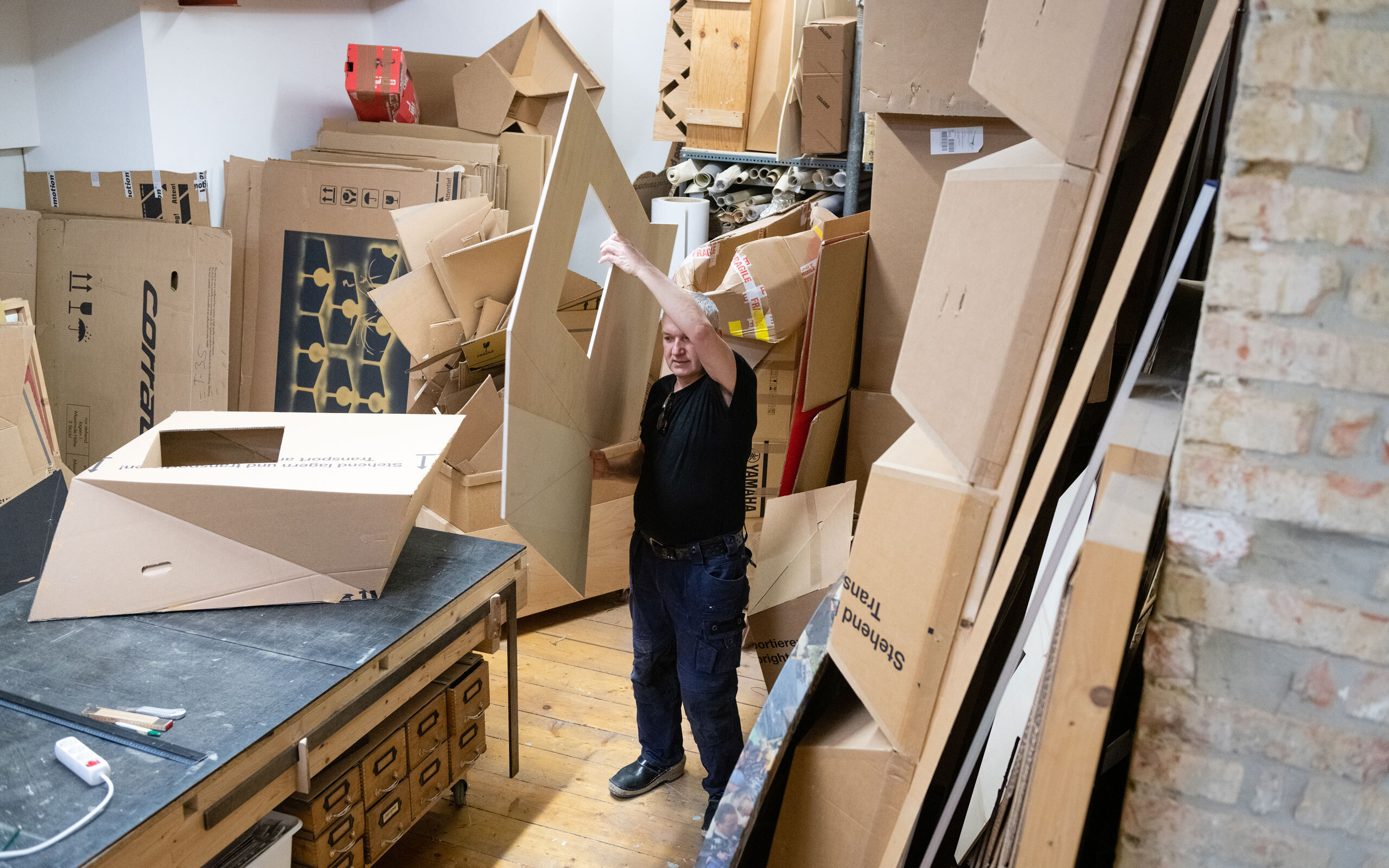
You often turn to cardboard when choosing the materials you work with. Where does your particular interest in cardboard come from?
Here is an installation for the Kunstraum Dornbirn, it is a module of a horizontal spiral. We cut the modules out of bicycle shipping boxes that I get from the bicycle stores. Why am I building this with cardboard? Imagine it in any other material. Even if it was just plywood, it would cost an enormous amount and cause an insane amount of damage from an environmental perspective. Plus, cardboard allows for a lot more than other materials. I can’t fold wood. If I want to make it in metal, I need a bending machine. Cardboard, a ruler, and a pizza knife are enough.
What happens with the remnants? Will they be used for smaller projects?
No, they go into the garbage can and that gives me a pleasant feeling. I’m a profiteer of the Corona pandemic in a way, the bike stores are booming, they’re selling 20 percent more. This I’ve never had material sourcing problems during lockdown. But it’s not just about the ecological and economic aspect. Robert Rauschenberg has said about cardboard that it is a universally available material, available everywhere in the same quality, you can do anything with it. Inscriptions and traces of use are an additional facet that I consciously include.
With the Old Boxes you have a set of objects that look like cardboard, but are not.
The Old Boxes are casts of boxes that I deform by using my body, by jumping or sitting on them, and then – if I’m intrigued with the resulting form – I cast them in the creased form.
The Old Boxes also invite you to use them. Where is the boundary between art and design for you?
If someone says it’s art, then it’s art, or, in other words: I’m an artist, not a designer.
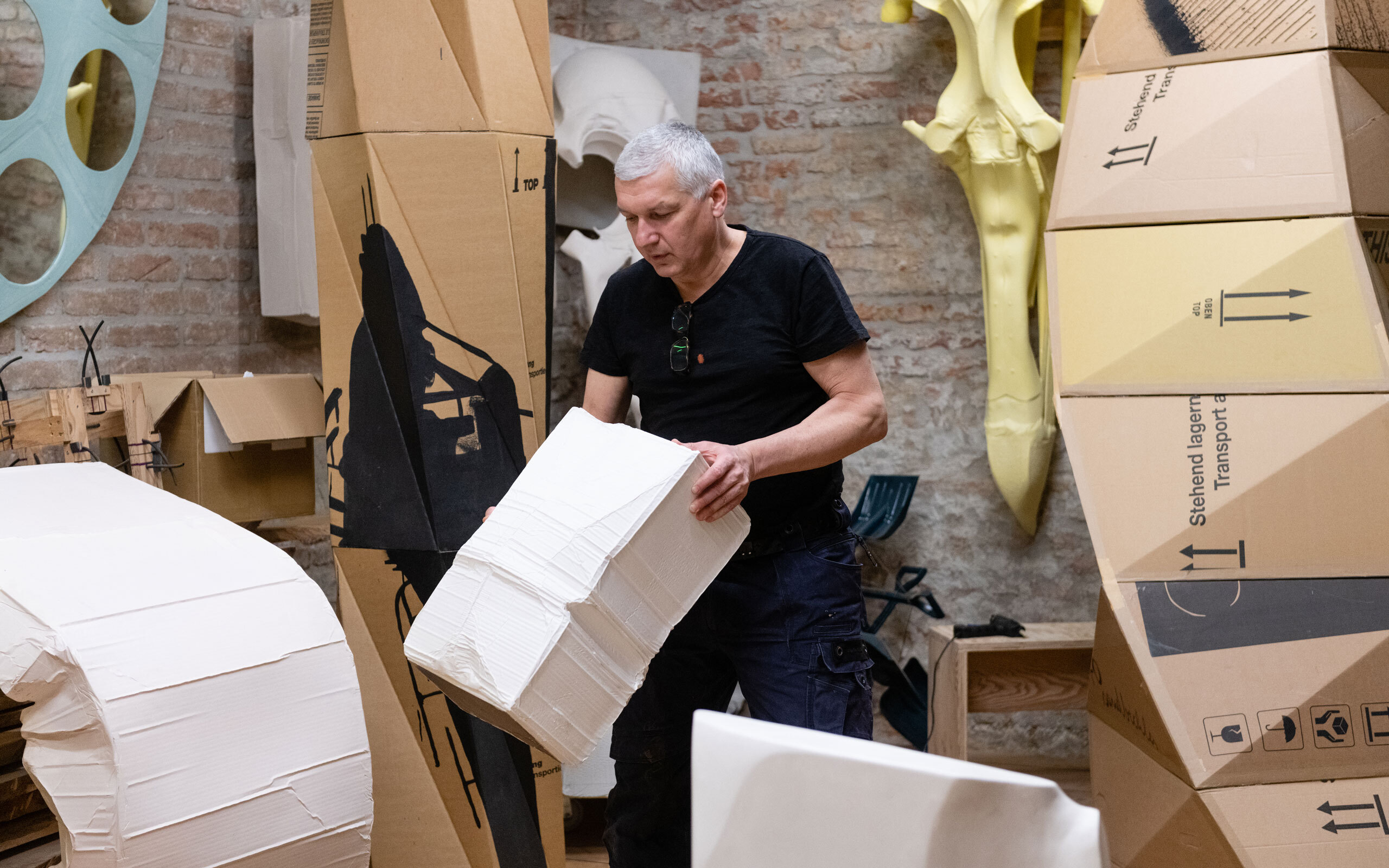
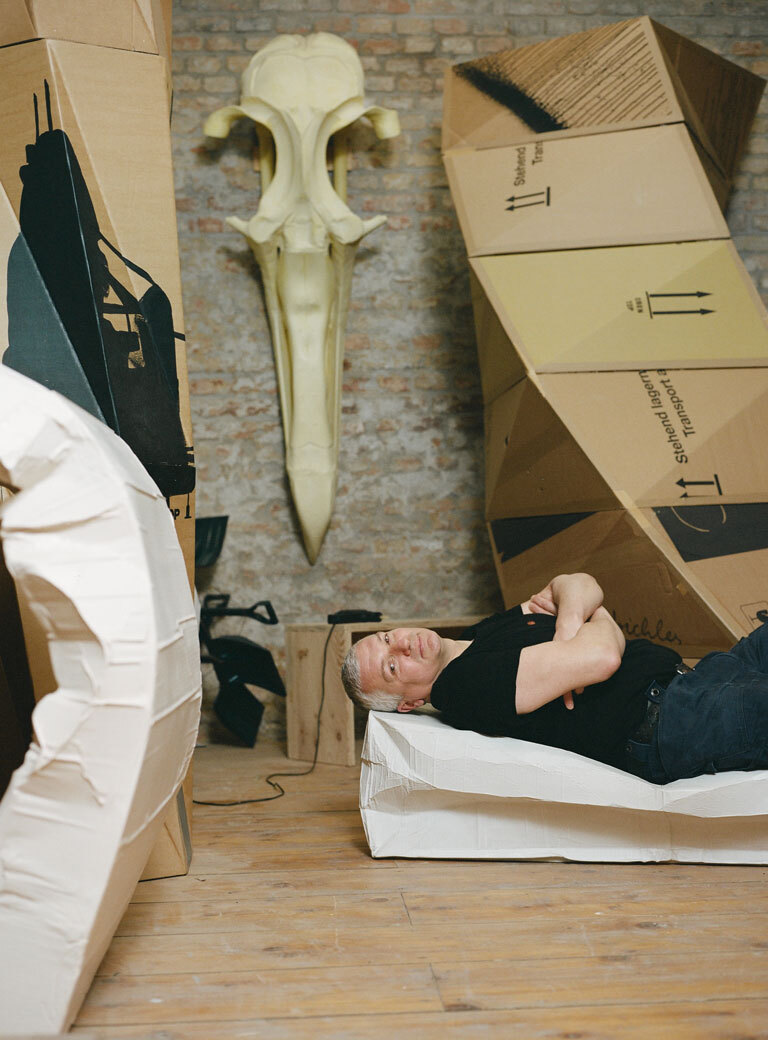
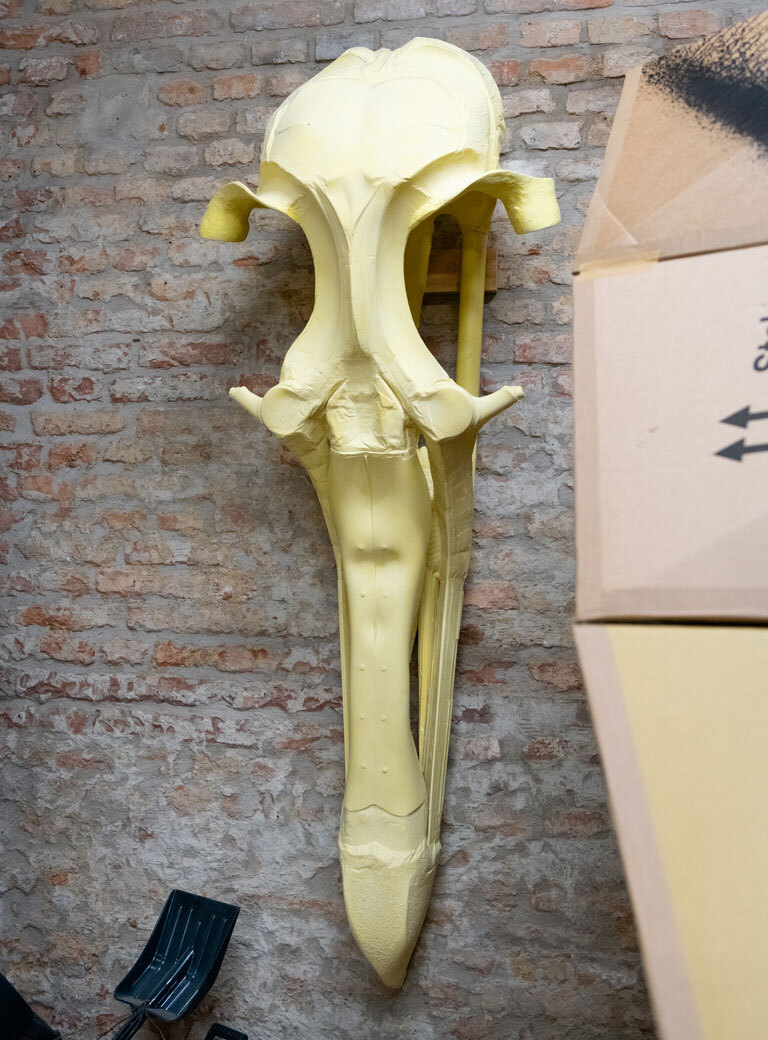
Which artists have influenced you?
My early exposure to Frederick Kiesler and Buckminster Fuller was formative. My socialization in Vienna with the art of the 1980s and 1990s, its protagonists, and my ongoing engagement with modernism are important points of contact that have influenced not only my work, but also the way it is presented.
Friedrich Kiesler, Peter Eisenman, Buckminster Fuller – you often cite architects as seminal for your work. And you yourself repeatedly design architectural interventions – for example, for the house at Mariahilferstrasse 1, which is called the House with Eyebrows –as an ironic comment on Adolf Loos’ house on Vienna’s Michaelerplatz.
Ironic is the appropriate referential term for the frequently misinterpreted text Ornament and Crime by Adolf Loos from 1908. This specific house at a central address in Vienna was a Gründerzeit house from 1860 with a particularly opulent facade decoration, which the house owner commissioned due to its prominent location and in reference to the Kunsthistorisches Museum situated diagonally opposite. Bombing raids during World War II destroyed the facade decoration and the remnants were removed. Many art historians say more was destroyed in Vienna by these measures after the war than during it. The competition was not about the facade per se, but rather about an “artistic accent.” Since I was not interested in that, I made the proposal to recreate the historic Gründerzeit facade in its three-dimensional extension in my formal language and to give the play of light and shadow a projection surface. Using the methodology of folding, I restored the original depth of the historical elements including the gables, half-columns, and the central risalit. Although the proposal went beyond the scope of the competition, once we had set up a 5-meter-high cardboard model on a scale of 1:1 in front of the house, the awarding authorities were convinced.
This means that the visual clarity of the 1:1 cardboard model was greater than that of the computer animation. Why is that? Actually, we should be trained by now to see abstractly via various screens.
Photorealistic animation misses the point of my work. It’s counterproductive, downright repulsive. If I put the model down, and the viewer only has to project it onto the white Gründerzeit façade, then a translation takes place. That’s a trait of art, that you produce things that still need a translation.
What constitutes good architecture for you?
Good architecture is, as Eisenman puts it, when you have feelings when you walk through a building. So it’s experiential.
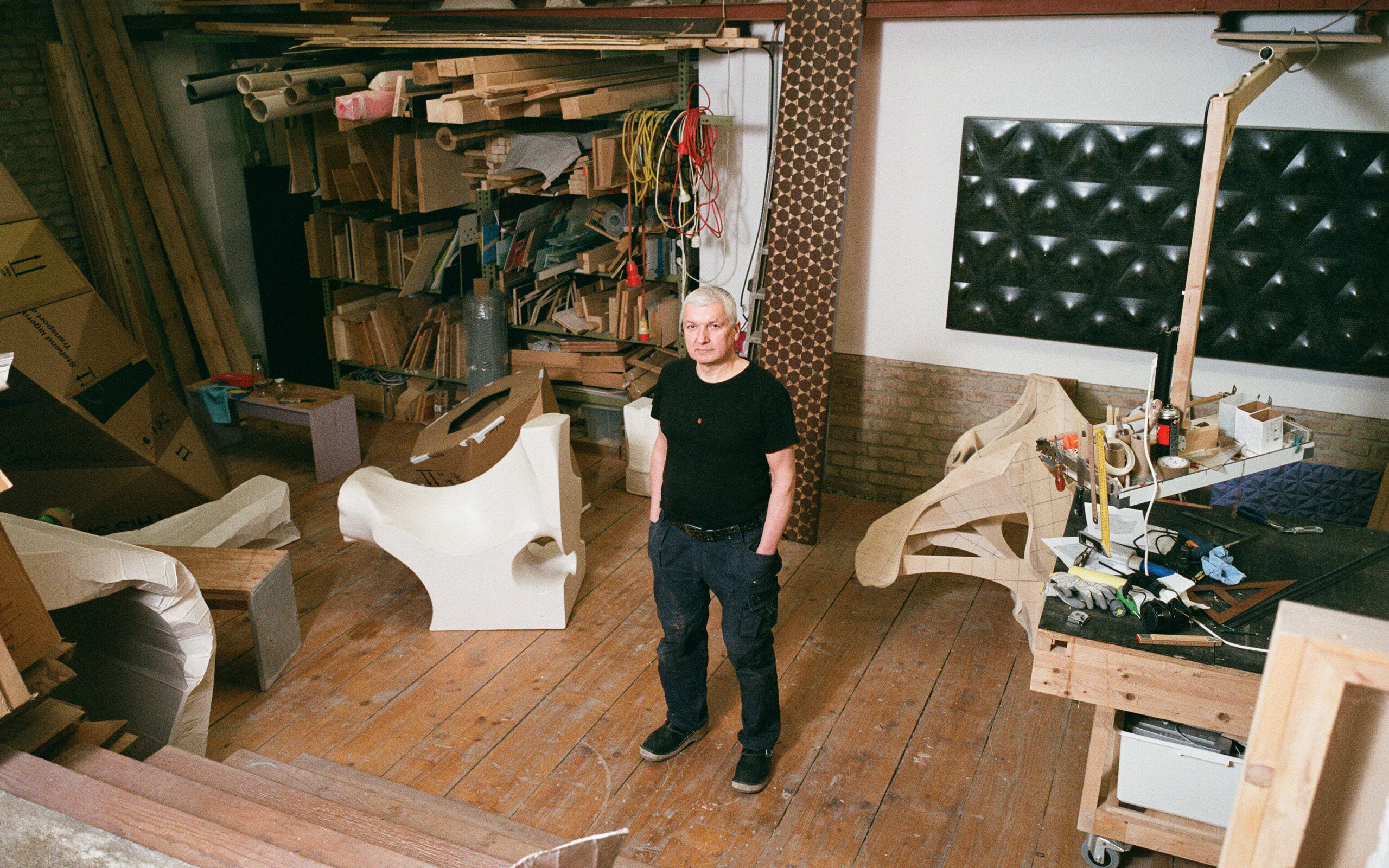
Have you ever thought about what you would do if you weren’t an artist?
I think that the essential driving force for an artist, involves the absence of a Plan B. Having said that – I’ve recently been reading in depth about the qualifications of "super-recognizers". These are people who are better than average at memorizing and recognizing faces and gestures. I can say that I believe they have quite good qualifications in this area.
What is it like when your art leaves the studio? How do you feel about the reactions of others, their interpretations of your work?
Recently, two texts were written about my current exhibition, each dealt with very different aspects that I personally had never thought of in this way. That is the most beautiful thing that can happen to me. I am interested in showing works that are so wide open that they allow room for interpretation, and allow new thoughts and approaches to arise.
What kind of experience do you want to trigger in the viewer?
Art is about awareness, situational awareness, which directs perception to another level. The House with Eyebrowswas intended by me from the beginning to appear in such a way that you can’t see from a distance that the facade is contemporary. At first glance, it looks like a typical Gründerzeit facade. Only when you get closer do you recognize the triangular surfaces. This transformation of perception interests me. I would like to acknowledge that as an important moment in my work. This also applies to the origami inspired works. From a distance, they are triangular surfaces. Then you recognize the newspaper sheet and ultimately the article. These steps of perception are what I aim for. Through this, people can experience a certain enthusiasm because something happens to them.
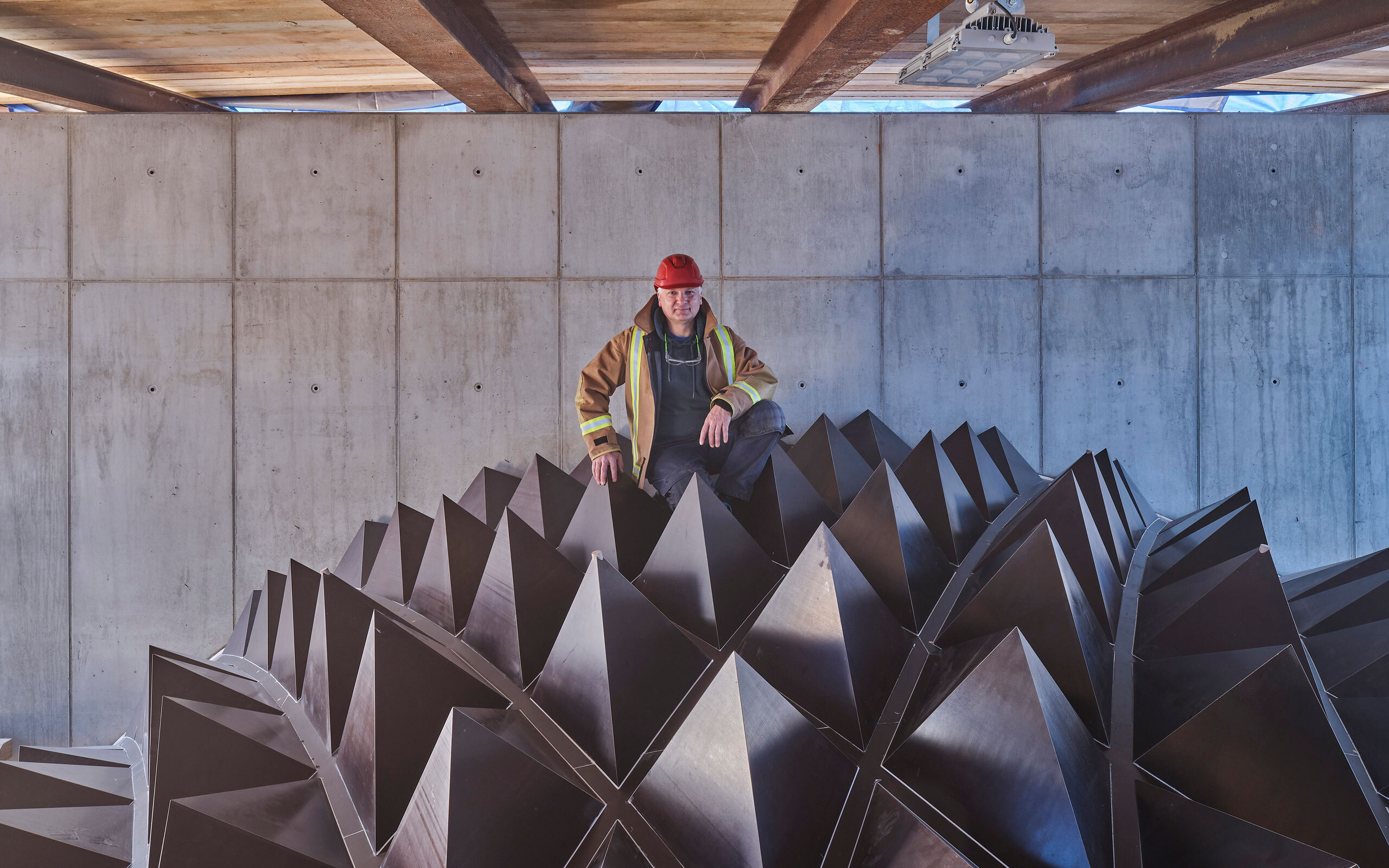
Kunst am Bau, Innsbruck, Photo: Günter Richard Wett
What advice would you have for your younger self?
I often think to myself that I have paid too little attention to maintaining contact with interesting contemporaries. The interchange with worthy people and interaction in contentious positions should occupy an important point of reference; and the economy of attention seems to me to be a precious commodity now more than ever.
What project can we look forward to in the future?
I was fortunate enough before the lockdown, to have won a competition for a new building at the University of Innsbruck. An intervention is currently being created there, a very exciting project for me because I have reclaimed the work directly into the concrete formwork of the building. I am designing the arched soffit with 200 pyramidal elements, which together form a complex three-dimensional sculpture. It’s a simple concept that orchestrates a multitude of fields of expertise and trades in its implementation: from clay ratcheting and mold casting, to building a cardboard model, to translating the parametric structure into file formats for a CNC router, which is then used to build 200 highly complex wooden formwork pieces that are implemented by my team on site and ultimately into which concrete is poured by the construction company.
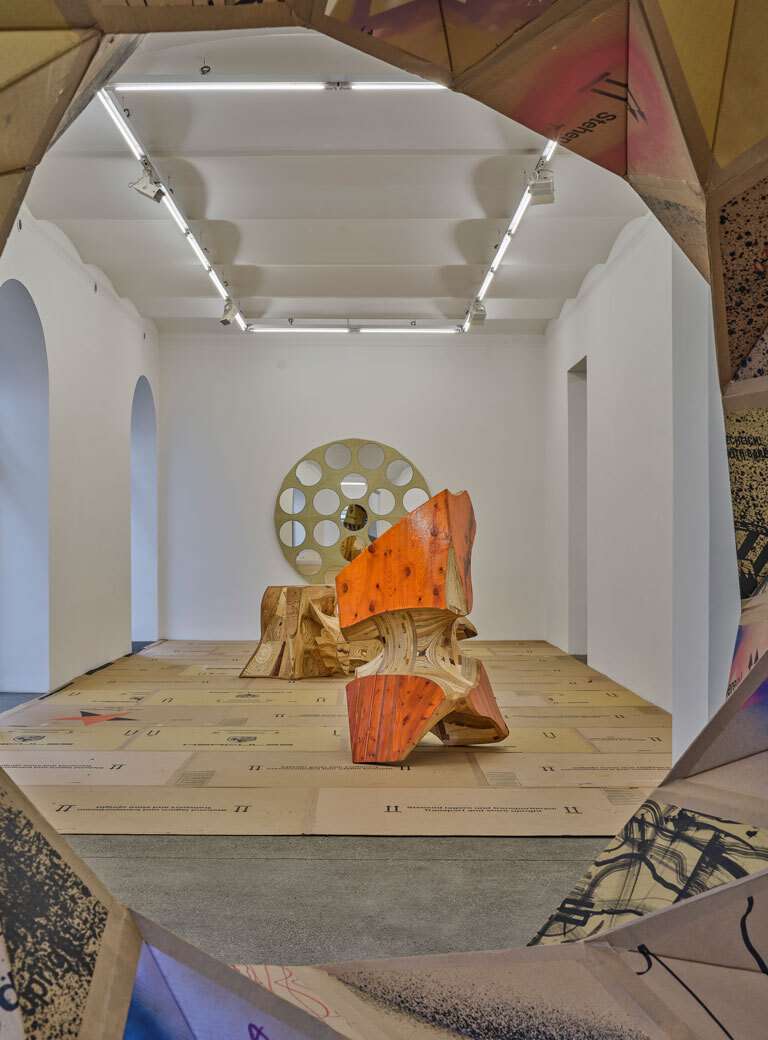
The Golden Bar, 2021, exhibition views at Galerie Elisabeth& Klaus Thoman, Vienna
Photos: © Günter Richard Wett
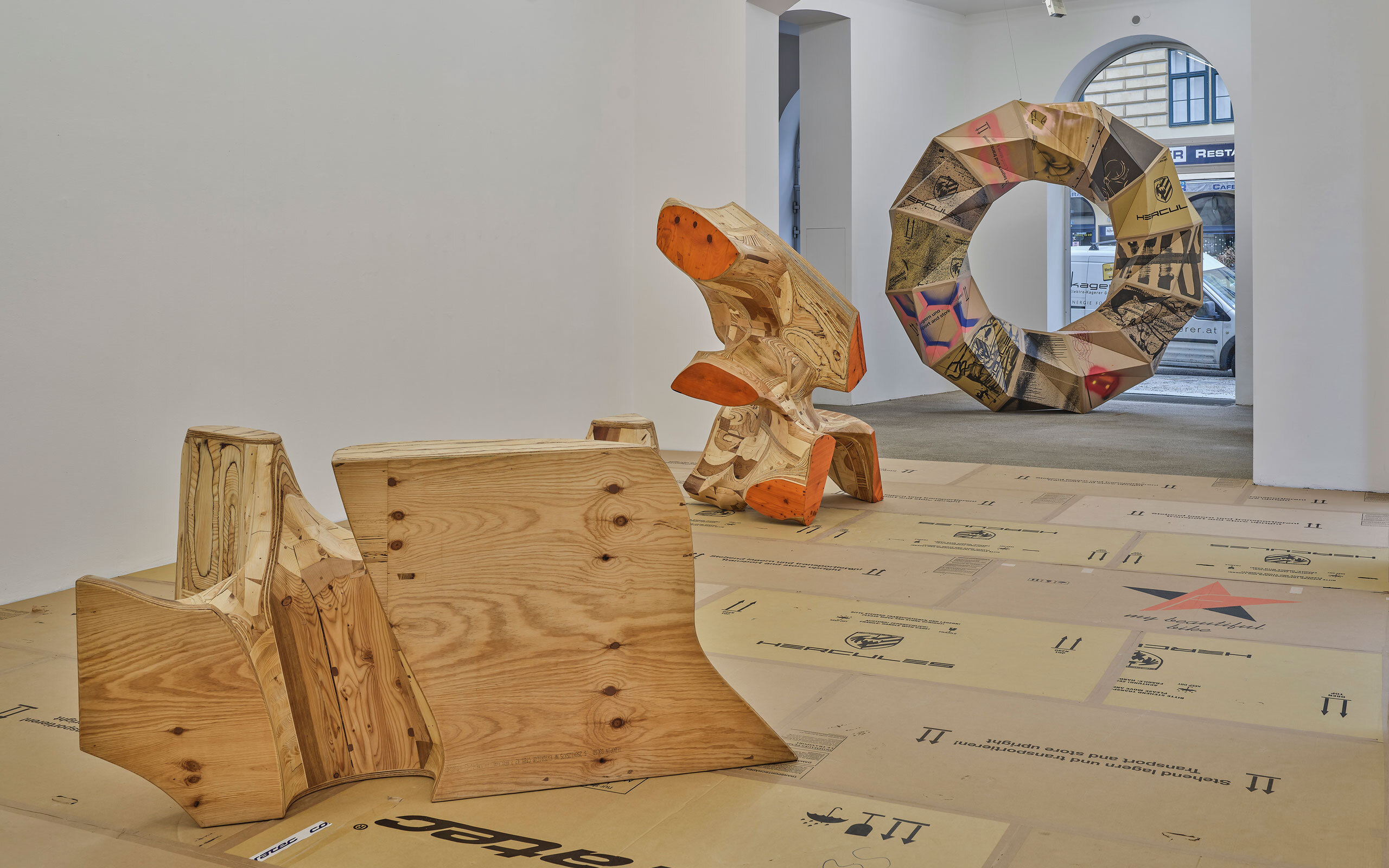
The Golden Bar, 2021, exhibition views at Galerie Elisabeth& Klaus Thoman, Vienna
Photos: © Günter Richard Wett
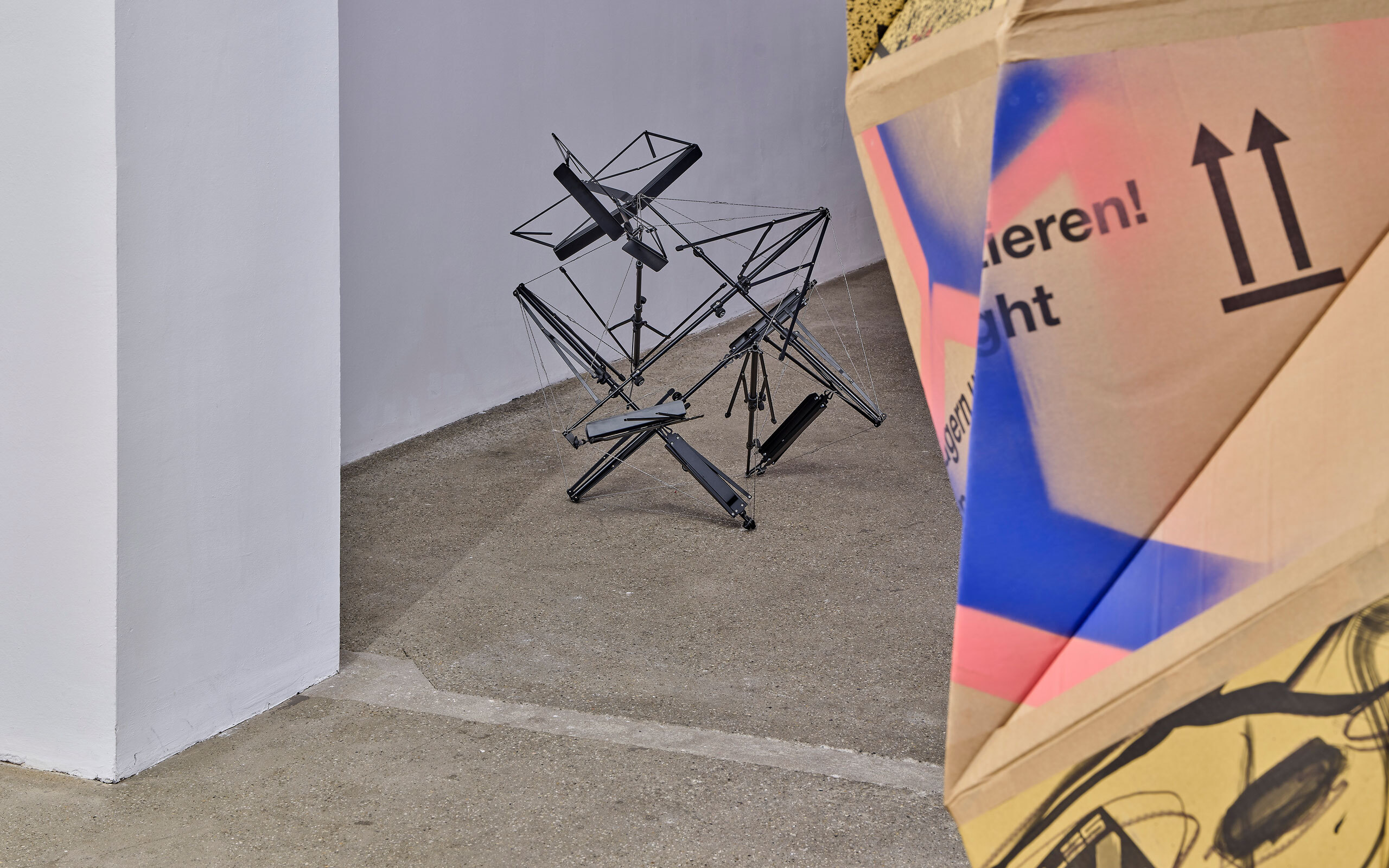
The Golden Bar, 2021, exhibition views at Galerie Elisabeth& Klaus Thoman, Vienna
Photos: © Günter Richard Wett
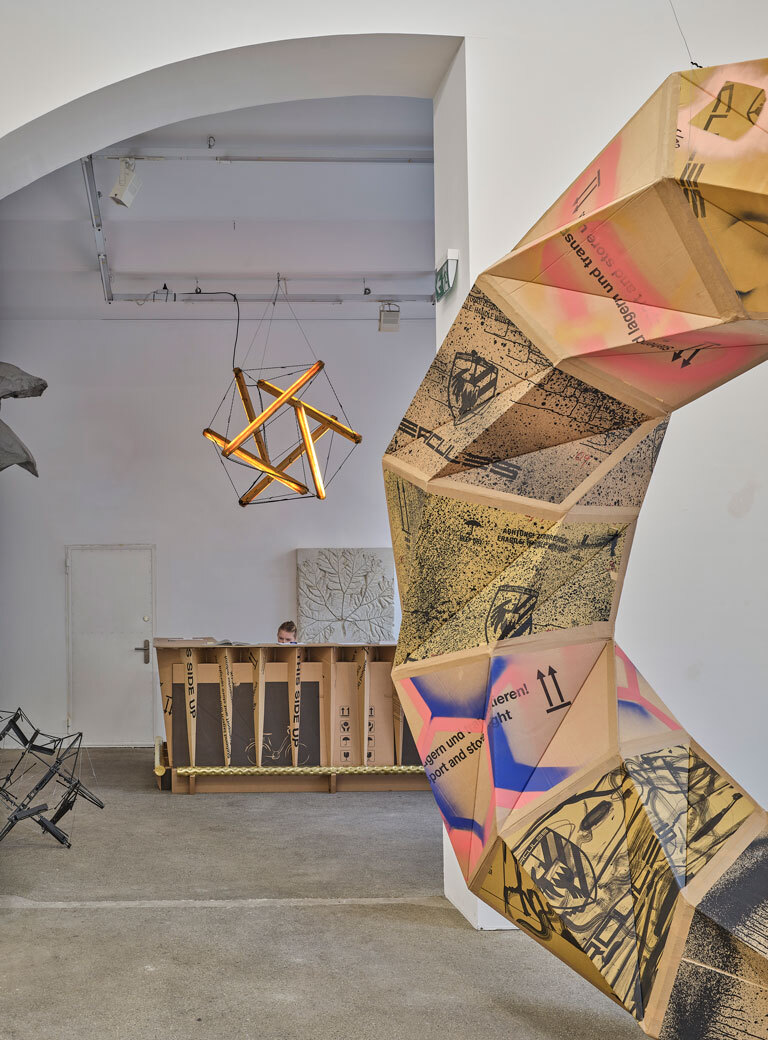
The Golden Bar, 2021, exhibition views at Galerie Elisabeth& Klaus Thoman, Vienna
Photos: © Günter Richard Wett
Interview: Barbara Libert
Photos: Christoph Liebentritt


